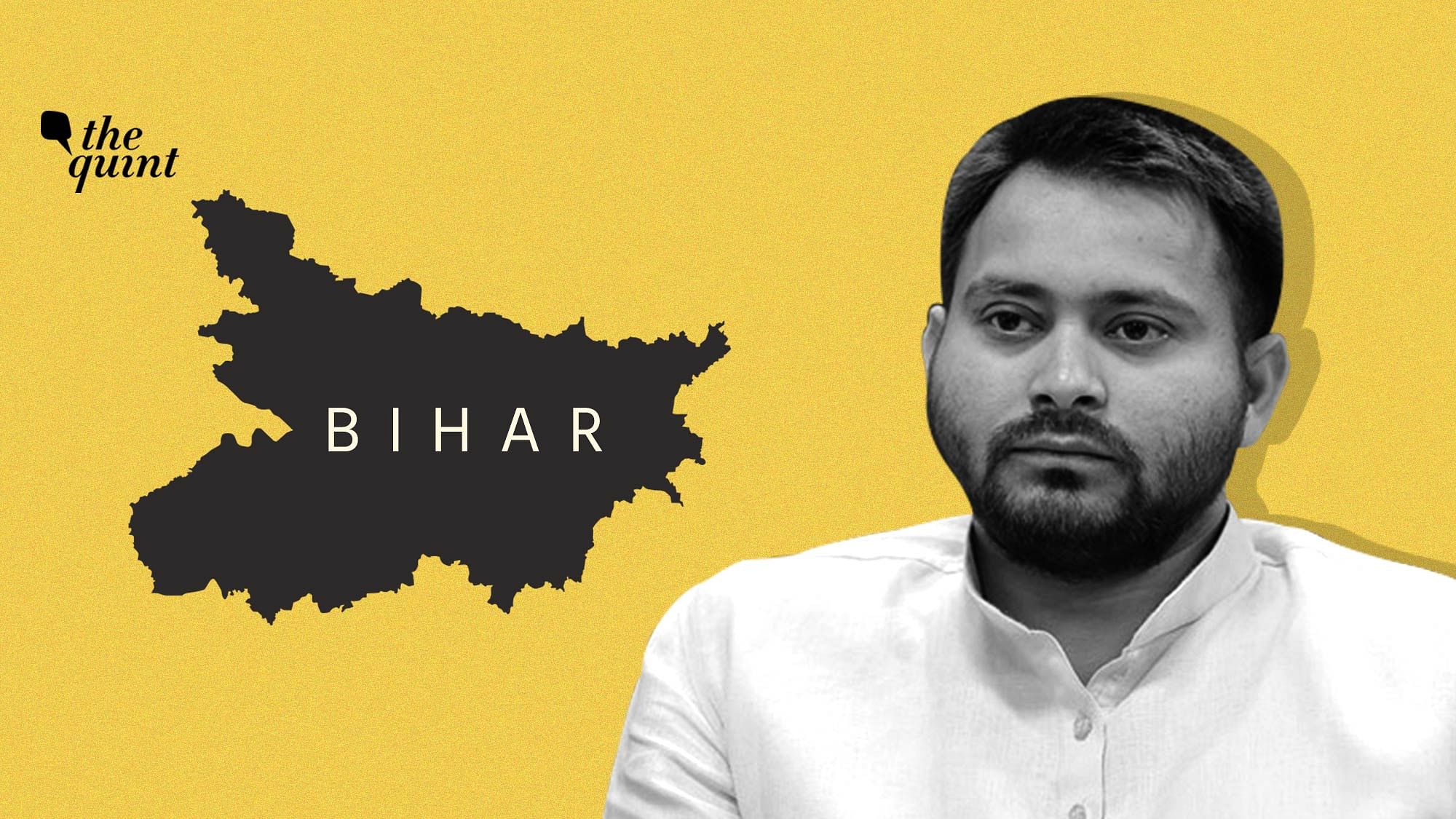Bihar Polls 2020: Will Tejashwi’s ‘Caste-Class’ Strategy Succeed?
By roping in the Left – ‘champions of the downtrodden’ – Tejashwi is experimenting with a ‘caste + class’ strategy.

Election fever is catching on in Bihar; both the alliances have finalised seat distribution.
In NDA, the JDU will contest on 122 and BJP on 121 seats. Manjhi’s Hindustani Awam Morcha (HAM) will contest on 7 seats on the NDA symbol. Paswan’s LJP will contest separately and put up candidates against JDU, while remaining within NDA.
In Mahagathbandhan (MGB), RJD will contest on 144 seats, Congress 70 and Left parties – CPI, CPI (ML) and CPM – on 29 seats. All the three caste-based parties – Manjhi’s HAM, Kushwaha’s Rashtriya Lok Samata Party (RLSP), and Mukesh Sahni’s Vikassheel Insaan Party (VIP) – have been eased out of the alliance. This sounds very counter-intuitive.
They bring with them the Mahadalit, Koeri/Kushwaha and Nishad community votes. These three caste groups account for 24-26 percent of the state’s population. This would have helped the MGB broaden the social base of its alliance.
Bihar Polls: Why Smaller Parties & Independents Are Forces To Reckon With
The NDA, on the other hand, enjoys the support of dominant caste groups like the Kurmis, Koeris / Kushwahas, and most disadvantaged caste groups too such as the Mahadalits. These account for roughly 60 percent of Bihar’s population, and double the anchor voting segments of MGB. Tejashwi has instead brought in Left partners and forced out HAM, RLSP and VIP. All these parties were engaged in a slugfest with Tejashwi Yadav over seat distribution. Stung by a disastrous show in the Lok Sabha elections of 2019, the RJD was in no mood to give a lot of tickets to these smaller parties.
They have been a force to reckon with in Bihar politics, and played a key role in 1990 in installing Lalu as chief minister, and in 2000, in installing Rabri Devi at the helm.
In March 2005, smaller parties (including independents) won 37 seats, which led to a hung assembly. President’s Rule was imposed for six months. In re-elections in October 2005, the Nitish-led NDA (JDU+BJP) defeated Lalu’s RJD, ending 15 years of ‘jungle raj’, while Others won 22 seats.
One of the primary reasons is that smaller parties have been hopping alliances election after election, and are seen as ‘opportunists’. RLSP, HAM and VIP were with the NDA earlier (2015 Vidhan Sabha), and then with the MGB (2019 Lok Sabha).
While the top leadership claims that they are undisputed leaders of their communities, they are in reality, nothing without the support of either alliance. Manjhi is not the undisputed leader of the Mahadalits, and similarly, neither is Kushwaha nor Sahni.
Revisiting A Precedent: What Happened In 2015 Vidhan Sabha Polls?
In the 2015 Vidhan Sabha elections, the BJP allotted 35 percent of the seats to its allies, totalling 86. However, they could win only 5, which converts into a strike rate of less than 6 percent. All of them recorded a lower vote share than BJP in the seats they contested.
BJP won more than one-third of its contested seats. The VIP hadn’t been formed at that time, however, Sahni was seen along with Amit Shah in many rallies. BJP needed these allies as Nitish had left the NDA and joined hands with Lalu and Congress.
And Nitish enjoyed better clout among Mahadalits, EBCs and Koeris than Manjhi, Sahni and Kushwaha. These parties then hopped on to the MGB bandwagon. In the interest of putting up a united front, Tejashwi conceded too many seats to these parties – 12 out of 40. It contested less than half the seats.
As a result, smaller parties couldn't even win a single seat. They were unable to transfer their votes to RJD and Congress, leading to RJD scoring a nought, its worst performance in the Lok Sabha elections since its formation. The RJD and Congress’s recorded vote share was along the lines of their Muslim-Yadav voter base. HAM and RLSP benefitted and got these votes.
Will Tejashwi Succeed?
Stung by this shocking loss, Tejashwi seems to have learnt his lesson. These smaller parties have pockets of influence in regions and among specific caste groups. However, Tejashwi has not repeated his past mistake of over-estimating their prowess.
By bringing in Left parties which claim to be champions of the poor and downtrodden class, Tejashwi is experimenting using a ‘caste + class’ strategy in Bihar, a new social engineering theory. These three parties garnered 3.6 percent vote share in the 2015 state elections.
Smaller parties garnered 17-18 percent vote share across class groups – poor, lower, middle and rich in the 2019 Lok Sabha polls as per the Axis My India survey. This is what the Mahagathbandhan will be eyeing, especially of incomes less than Rs 10,000.
Whether or not he will succeed in his strategy and can take advantage of Nitish’s declining popularity, is another matter. As per Crowdwisdom360, the NDA appears to be marginally ahead this time around.
(The author is an independent political commentator and can be reached at @politicalbaaba. This is an opinion piece. The views expressed above are the author’s own. The Quint neither endorses nor is responsible for them.)
(At The Quint, we are answerable only to our audience. Play an active role in shaping our journalism by becoming a member. Because the truth is worth it.)